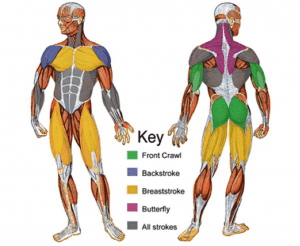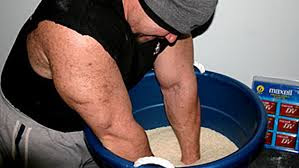Greetings from lock down. Over the past couple of weeks I have listened to a number of webinars and participated in two. A quick shout out to the team at HandSpark, Beth and Ngaire for their initiative in creating the hand therapy summit with 9 speakers over 3 days. It has been well worth tuning in to.
 |
Beth & Ngaire from HandSPARK
|
I have also been involved with an Introduction to Hands webinar that the Australian Hand Therapy Association did last weekend, and also one on Hand Injuries to the musician and Athlete that I did with Karen Fitt from Melbourne Hand Rehab for the students group at the Australian Physiotherapy Association. Whilst both presentations provoked a range of questions from the participants, a common one was "how do I get into hands?".
It's a tricky question to give an answer to as there is no consistently direct pathway. We no longer have a post graduate course in Australia due principally to bean counters at the universities, not due to lack of support from potential teachers or students. Several private groups have stepped into the breach, and alongside the education offered by the AHTA, there are now private graduate fellowships and workshops available. Travelling overseas was how I found my way in, but will that be an option for others? Maybe not for a while. What else...  |
Lots of great courses here...
|
In a flash of laziness, I remembered the podcast I did with Jack Williams some months ago now in pre-COVID days. He had followed up with a summary of our conversation with an emphasis on that very question that I always intended to publish, but never did.
Here then is a guest piece by Jack Williams. Please do have a listen to his podcast especially if you are a young therapist on the cusp of, or just starting your career because he talks a lot about opportunity and how you can shape your direction and path. Thank you Jack...
Hello
Sporting Hands readers...
I first
came across Hamish's blog in 2017 as a student physiotherapist and thought it
was a great learning resource which really helped me whilst I was on a hospital
orthopaedic / hand therapy placement.  |
Hard to find a photo of Jack
|
I really
enjoyed our chat and I promised Hamish to make a contribution to the blog which
has proved very helpful over the years! I thought I would leave the sporting
injuries to the experts and write about getting experience in hand therapy as I
recently hosted a podcast with Hamish talking about this very subject...
You can
listen in to the podcast here...
https://linktr.ee/Healthlinkd
I am
fascinated with Hand Therapy for many reasons...
- Did you know Brian Mulligan’s
“apple on the head” moment for the development of his mobilisation with
movement manual therapy techniques occurred when he was working with a
stiff PIPJ?
- Splinting is widely
considered the defining factor of a hand therapist - but as Hamish says -
splinting skills constitute a very small proportion of the job!
- Hand therapists have a
specialised knowledge of physiology, anatomy, neuroscience and orthopaedic
knowledge which is unrivalled by other spheres of OT and physio.
Maybe
this is why getting a position in hand therapy is so competitive... these
skills are not taught at university and private practise educators and mentors
are hard pressed for time to impart such knowledge...
Which
brings me to the point of this article…
What are
some things a student or new graduate OT/PT can do to get a training position
in Hand Therapy?
The AHTA
runs a number of special interest groups in each state, getting along to as
many of these as possible is a fantastic learning opportunity and also good for
networking... as a student it is recommended that you find out where your
nearest SIG group is and get along!
Approaching
a private practise as a student and doing some observation is a good way to get
your foot in the door and learning about what is required for a private
practise role. If you are volunteering for a period of time - this should not
exceed more than a few months and be sure to make yourself a part of the team’s
professional development in-services and other learning opportunities.
There are
also a lot of overseas training in hand therapy available in the UK. Hamish
first started working in NYC as a hand therapist and also notes that many early
career and experienced OT / PT's are able to find hand therapy training
positions and work in London and other parts of the UK.
The AHTA
also runs a number of courses for OT/PT's who are interested in training in
hands - they are for people looking for professional development in hand and
upper limb MSK and students and new graduates are welcome to attend - even without
much experience in hands... getting started early with one of these courses
will stand out on your resume - particularly with the new pathways for
'Accredited Hand Therapist' come into play and both private practise and public
employers value this certification for leadership positions for hand
therapists.
The are
many exciting prospects in the future for Hand and it is certain that this area
will remain distinct moving into the future... Hamish also talked about what is
in store for hand therapy on the podcast as well as 3D printing of splints and
places for hand therapists in professional sports... You can listen in here...
@Healthlinkd |
Linktree
It was
great to visit the Heidelberg Repatriation Hospital and put a face to a
familiar blog...
Thanks
again for coming on the podcast Hamish!
Jack
 Consider different strokes. It is obvious, or at least should be once you stop and think about it, that breaststroke utilises different muscles to free style. Just have a look at the body shapes of Olympic swimmers. The demands the strokes place on the wrist will change as shoulder position changes. Feathering of the hand through the water will also alter. Use this to your advantage. If one style is inflammatory, can you integrate another so that swimming fitness is maintained throughout recovery? There will be a way.
Consider different strokes. It is obvious, or at least should be once you stop and think about it, that breaststroke utilises different muscles to free style. Just have a look at the body shapes of Olympic swimmers. The demands the strokes place on the wrist will change as shoulder position changes. Feathering of the hand through the water will also alter. Use this to your advantage. If one style is inflammatory, can you integrate another so that swimming fitness is maintained throughout recovery? There will be a way.










![Stallone, Sylvester [Cliffhanger] photo](https://www.statesidestills.com/prodimages/stallone_sylvester_cliffhanger_58373l.jpg)









